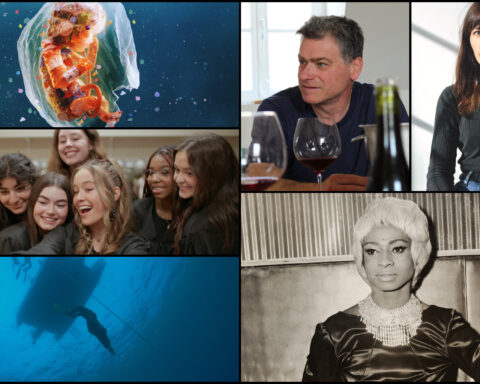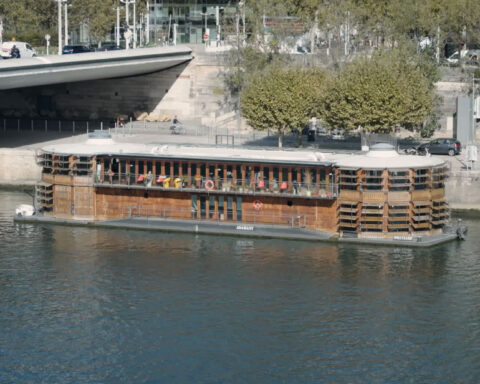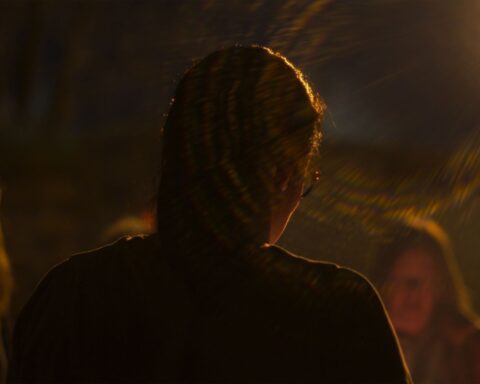The Downtown Eastside (DTES) in Vancouver is well known for its crime, addiction, poverty, prostitution and homeless people. Most Vancouverites prefer to stay well away from it. Having lived near this part of Vancouver, I wanted to get to know some of the residents individually. I saw an opportunity as a photographer to collaborate and have a greater insight into their daily lives. I wanted to capture a different side of Vancouver’s DTES residents.
My approach meant spending many weeks in freezing temperatures during a harsh winter. I wanted to realise the project not just as a series of portraits, but also as a social documentary. The street photography aspect allowed a certain freedom, giving a voice to the people I talked to and photographed and a chance to see what an outsider would not—a more authentic side to their lives. I believe there is a spontaneity that needs to exist at the core within photodocumentary work, which has always been to document reality, candidly, by creating something beautiful from the unexpected.
My work angle came from a compassionate and positive approach to the individuals in the community. It was extremely important for me to create relationships with people and spend time with them so they would feel comfortable in opening up about their personal lives; the trust we built allowed me to create an honest portrayal about them within their everyday environment. My interest stood firmly in treating the people I photographed without judgment. I wanted to represent them as they were in that moment, not altering the truth. I wanted to oppose stereotypes, learn about their particular avenue of life and raise awareness of the east-side dwellers to people within the city and as far as possible. My most important desire was to use the power of photography as a tool for change for the people in this community.
When people view my photographs, I want viewers to see each individual as a reflection of themselves. Everybody wants to be understood. Nobody wants to have a mental illness or a drug addiction.
The people I met in the DTES were often people who had fallen on hard times but they were friendly and willing to participate in my project. Even the most threatening, insensitive people were willing to listen to what I had to say, if it meant portraying them in a positive light rather than a negative one. For most if not all of the people I encountered, addiction played a major role in why they were there. It not only got them into life on the street, it kept them there.
I met a lady named Angel, who was upset by the events from the night before, when she had been robbed and beaten by two men she claims were friends, but who had turned against her. She told me she suffers from bipolar disorder and a big addiction to crack cocaine and other drugs. She has a degree and is a writer but her illness is a huge obstacle in her life. Though Angel had no money, she was so grateful I was photographing her that she offered me her watch as a thank-you, which I gratefully declined.
I was inspired by stories such as Clint’s, a man I met with his three-legged dog, Lucky. He doesn’t suffer any addictions but unfortunately Clint broke his back three years ago while working for a friend, pulling something too heavy for his frame to handle. He had to wait three years for a room in the East Hastings area through BC Housing, a corporation that offers residences for low-income people. Clint found his dog in a rescue shelter after she had lost a leg and been severely abused. He called the dog Lucky. Clint told me with great sincerity that Lucky is his antidepressant in life.
There were many interesting, larger-than-life characters that I came to meet often. One in particular stood out, not just for his charms and great personality but because you could hear him coming from blocks away! His name was Omar, a man who carried his boom box everywhere, playing the greatest selection of tunes. Because he has such a community face, nobody would dare to target him. He could leave his boom box on the street and nobody would steal it, knowing it was his.
Molly and Nicholas were a couple I met who wanted me to photograph them kissing, because after many years together they were still happy. They had just moved out of the Astoria Hotel where they had lived for seven years. They said the Astoria had 40 rooms per floor and one bathroom to share—not an easy place to be. There are plenty of ex–drug addicts finding a way to help the community and who become guiding lights for those in trouble, such as Yvonne, who provides a regular service to feed the homeless. She is an ex-addict and showed me the exact place she took drugs for six years of her life, beside a doorway in one of the most dangerous alleyways in Vancouver, where I was threatened to be killed (if I took photos of dealers) just before walking down it.
Here I was confronted by an angry woman who thought I was a danger to her so she began to get aggressive with me. With Yvonne’s help I won over Leslie, a heroin addict who agreed to have me take her portrait and open up to me about how she feels about the area. She told me about the importance of the DTES. “Everyone is here for a reason; we are a community, in it together. We all look out for each other and love each other. If I didn’t have this community I’d rather die.” She wanted to show me her scars on her arms from injecting heroin and many other scars, one from an attempted suicide and another from a recent cut to her hand. She gave me a big hug before I left.
The DTES is a place full of vibrancy and inspiration beneath its negative appearance to outsiders. I found that out myself. It is not just how the residents appear that is the subject of my work, but also the phenomenon of the subculture and how these people have been moulded by their harsh conditions. The backdrop and urban settings in each photograph were just as important to me because this is a reflection of who they are and where they spend their time. For instance, I met Andy while he was collecting cans with a shopping trolley in back alleys. By recycling cans that are littered around the city, he is doing his fellow residents a favour by keeping the city clean. It gives him a purpose and keeps him eating every day.
Vancouver has been exposed to much positive press over the years, particularly since it gained its title as ‘one of the most liveable cities in the world.’ But is this title creating pressure to discard Vancouver’s DTES? If so, why should this title have the power to drive people from their own homes? Aren’t people just afraid of what they don’t understand? Because eliminating the area will not make these people go away; turning a blind eye will only make matters worse. I believe in the individuals living in the DTES as a collective whole. It is an environment where people can and do relate to and support one another.











